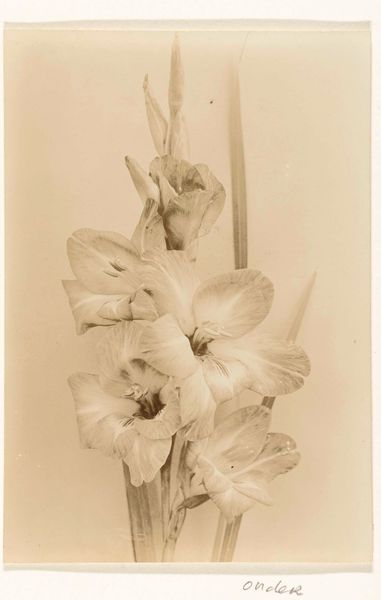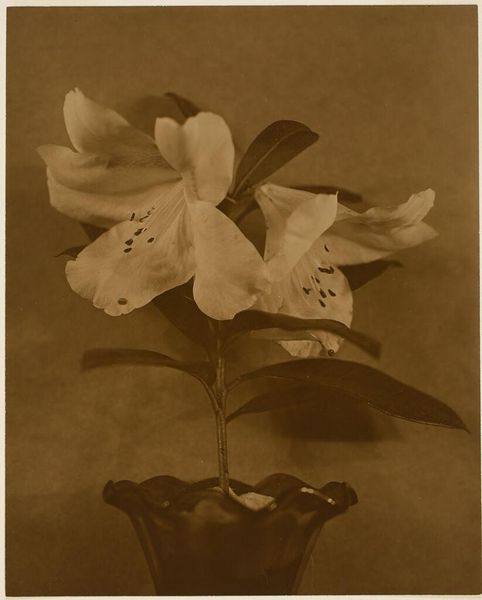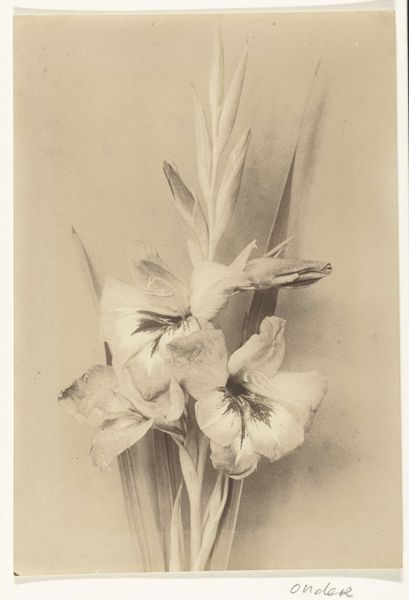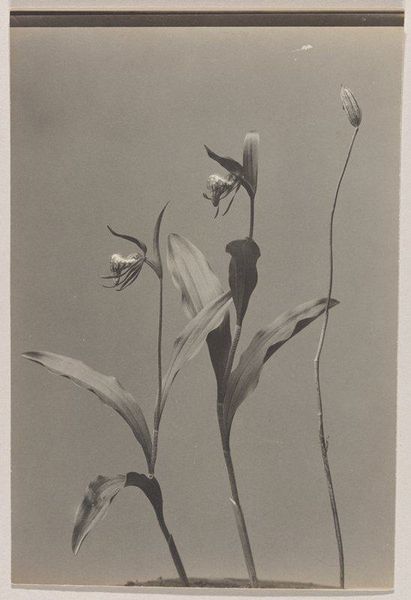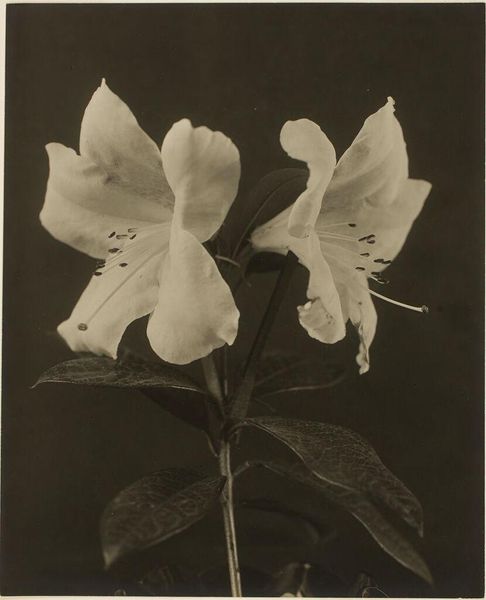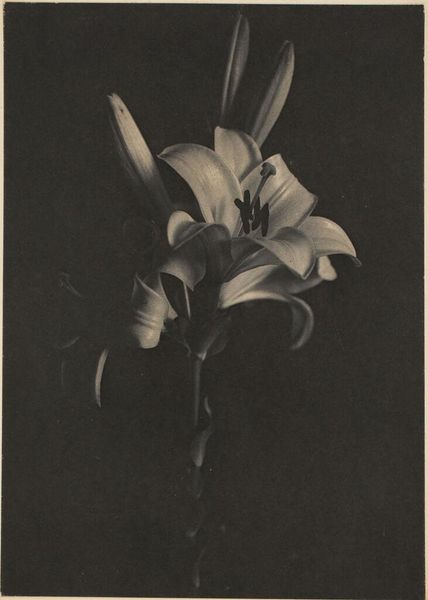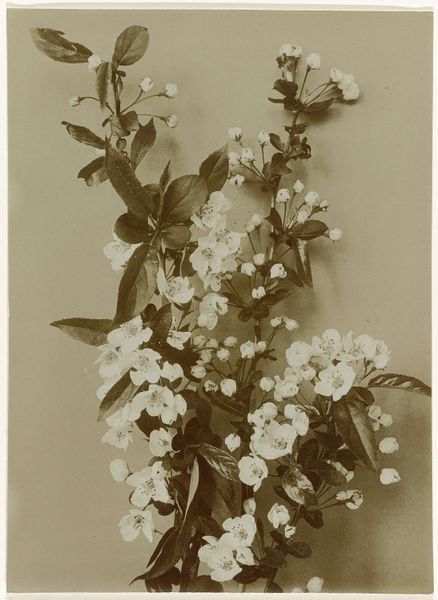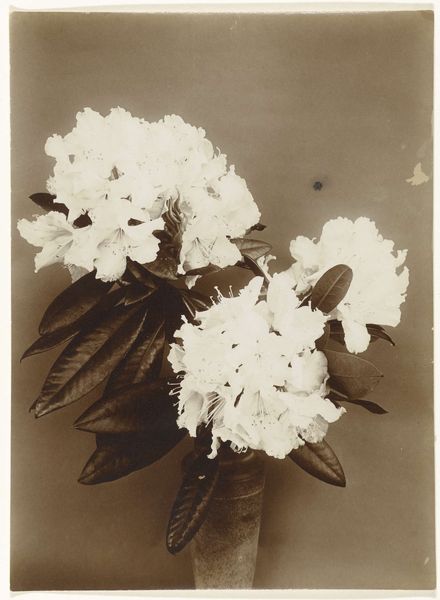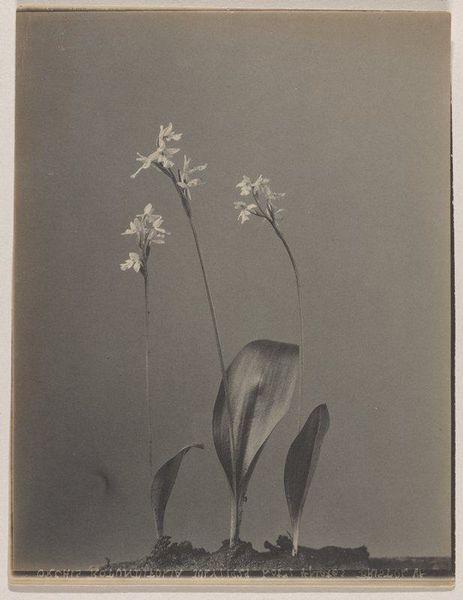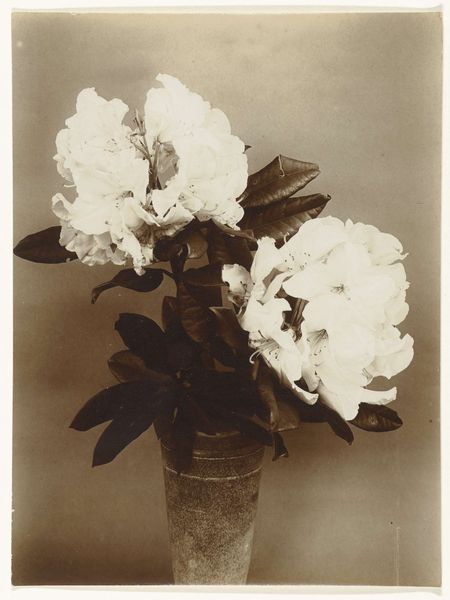
Dimensions: height 168 mm, width 114 mm
Copyright: Rijks Museum: Open Domain
Curator: Welcome. Before us is "Tak van een bloeiende gladiool", or "Branch of a flowering gladiolus", a gelatin-silver print captured by Richard Tepe sometime between 1900 and 1930. It's a striking example of pictorialism, held here at the Rijksmuseum. Editor: Immediately, the flower itself strikes me. Those dark markings against the pale petals create an almost watchful, face-like quality. It's like the flower is observing us. Curator: Interesting take. The gelatin-silver printing process itself allowed for a remarkable tonal range, enabling Tepe to capture those delicate gradations in light across the petals. Think about the industrial production of these materials, democratizing artistic tools. This pushed photography beyond simple documentation. Editor: Absolutely. And the choice of the gladiolus, specifically, isn’t arbitrary. Victorians, and likely those in the Netherlands at the time, associated it with remembrance, sincerity, even strength of character. The flower carries this weight of intended meaning. Curator: While those readings of floral symbolism were certainly prevalent, it’s crucial to acknowledge the social context of photography itself. Here, Tepe isn’t just replicating nature; he’s using a mass-produced photographic process to elevate this image into the realm of fine art. The craftsmanship and darkroom manipulation involved… Editor: ...craftsmanship definitely present, but let's consider the light itself! The soft focus lends it a dreamlike, romantic quality. Those halations around the petals seem to enhance its ethereal beauty, evoking notions of purity and maybe a bit of wistful nostalgia. There is something really evocative in it's symbolic representation of beauty. Curator: True, it isn't just a clinical, botanical study. But it represents an intervention with nature that needs factory mass production for it's full impact as "art." The beauty of this is caught with tools widely available. Editor: A good point. Considering Tepe’s perspective, and your reminder about mass-produced means of production, it reveals more than a snapshot. Curator: Indeed. Looking closer reveals how photographic methods transformed visual culture for many artists and how we can see nature in the details of these photographs. Editor: Yes, leaving us pondering nature and photography’s layered, lingering dialogue.
Comments
No comments
Be the first to comment and join the conversation on the ultimate creative platform.
